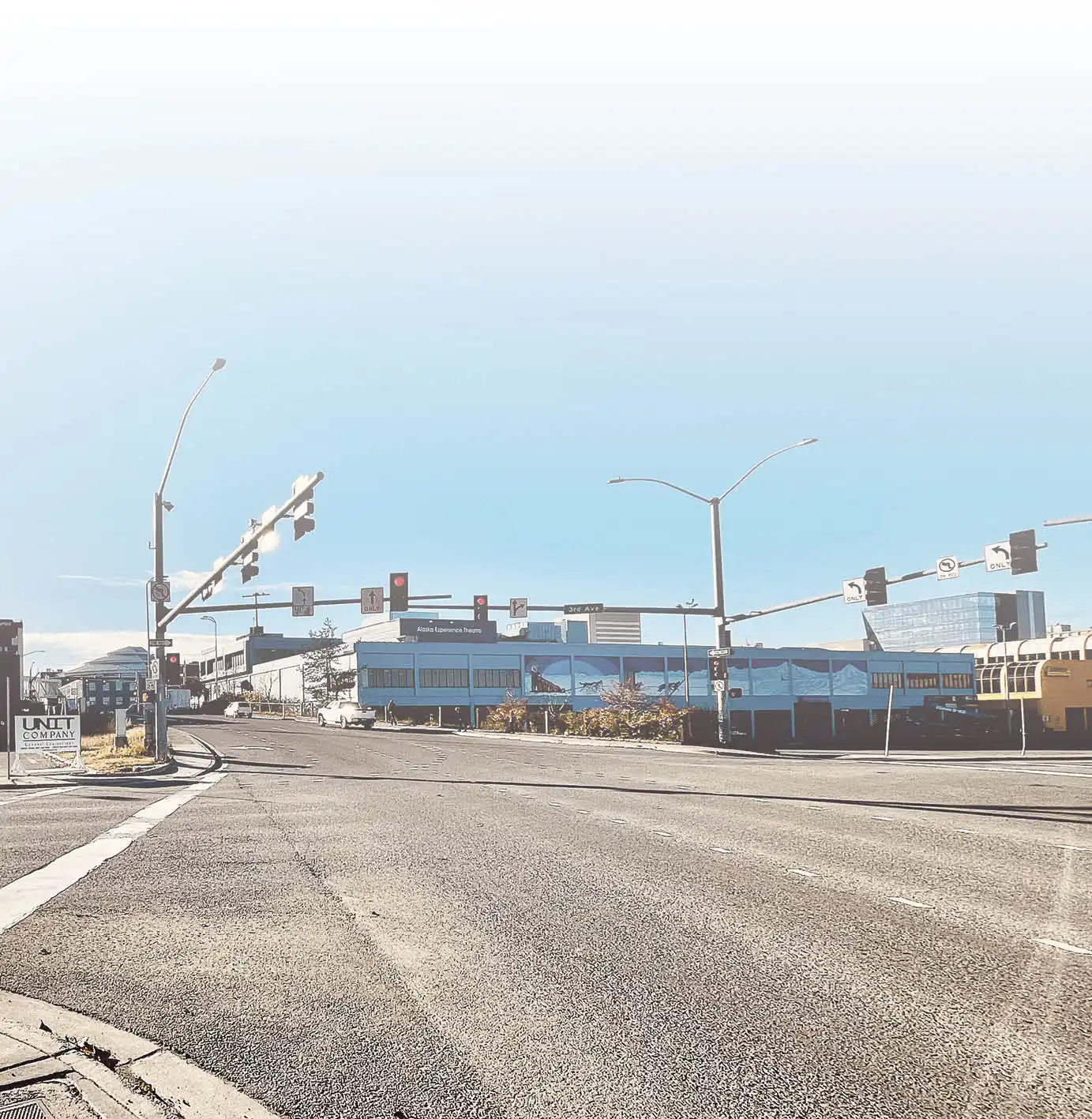
ditarod mushers cross the ceremonial starting line in Downtown Anchorage at Fourth Avenue and D Street, next to the Balto statue, surrounded by cheering crowds. Buildings along the chute, however, are much less crowded inside. Practically deserted. The Post Office Mall and, across C Street, the former Holiday Inn have seen better days.
Their best days may lie ahead, as Mark Begich sees it. The former mayor and US senator is redeveloping both properties with his business partner, Sheldon Fisher, who formerly led the Alaska Department of Revenue.
The partnership, named MASH (short for “Mark and Sheldon”), is managing renovations that, taken together, are called the Downtown Revitalization Project. Phase 1 is the hotel and Phase 2 is the mall, which the previous owner branded as “4th Avenue Market Place” along with Sunshine Plaza next door.
On paper, Fourth and C is a perfect location. Begich points to unobstructed views over Ship Creek of Denali and Mount Susitna. It’s also the gateway for Government Hill residents. Looking the other way, Begich sees the Anchorage Museum just beyond the Anchorage 5th Avenue Mall. Everything lively about the original townsite seems to radiate from the intersection, yet the properties themselves fall short of that potential.
“Why isn’t that building, something happening with it?” Begich asks. “Anybody who looks at these properties sees them as they are; we see them as what they’re going to be.”
It’s not a dream; refurbished hotel rooms are opening this month. In the mall, the lower level is warehousing furniture as more hotel rooms are completed, and upstairs offices have been demolished to make room for homes.
“Too many people say they’re going to do a project, then it never happens,” Begich says. “We waited until a certain point, then we announced it.”
Growing up in a political family, Begich kept one foot in the real estate business. He managed his family’s properties, and after a stint on the Anchorage Assembly, he led an investor group that bought a hot springs resort in Carson City, Nevada “with the goal of bringing it back to its glory days,” according to its website. By 2020, the resort could boast of adding three new pools.
In 2020, Begich’s Alaska Hotel Group purchased the former Holiday Inn, then styled as the Aviator Hotel. Tourism was in crisis that year, but Begich was prepared for a rebound.
He recalls speculating, “What could this be? Why isn’t it? For a lot of reasons: people walk in and they go, ‘Oh my god, look at the demo cost.’ Well, yeah. But—the location is unbelievable.”
The lobby used to be on the first floor, on the Third Avenue side, but the hotel’s address is on Fourth Avenue (one level higher than Third, ever since the 1964 earthquake). To resolve that confusion, MASH is putting the main lobby on the second floor, south side.
A limited lobby is opening this month to service the first 60 rooms. Additional rooms will be put into service over the winter until the phase finishes with 160 rooms and the lobby. Generally working from the roof down, the next phase also includes top-floor conference rooms and an outdoor heated deck, both serviced from a bar that also has elevator access to the second-floor kitchen below.
Windowsills along Fourth Avenue have been lowered and the ceiling partly raised to the open beams, both to let in more sunlight and to improve views. “There’ll be no better place to see Fur Rondy and not freeze than right here,” Begich says, whether watching activities in the street or fireworks over Ship Creek.

Alaska Business
The rooms, restaurant, bar, and brewery total 200,000 square feet. No hotel of this size and scope has been built in Downtown in more than twenty years since the Marriott Anchorage Downtown high-rise opened in 2000.
This hotel is not being built, though; it’s repurposed. Begich says he prefers to redevelop properties, as he did with the old Florcraft Carpet One building near the Downtown fire station. As a revitalization project, Alaska Hotel Group benefits from a municipal property tax exemption worth approximately $1 million, spread over ten years.
The city is also helping to facilitate clean energy and resilience improvements through the Commercial Property Assessed Clean Energy & Resilience (C-PACER) program. The project will pay back more than $16 million in private-sector lending to cover the cost of ventilation and wiring upgrades, much of it through operational savings. “We’re basically taking out ‘80s technology and bringing all the new stuff,” Begich says.
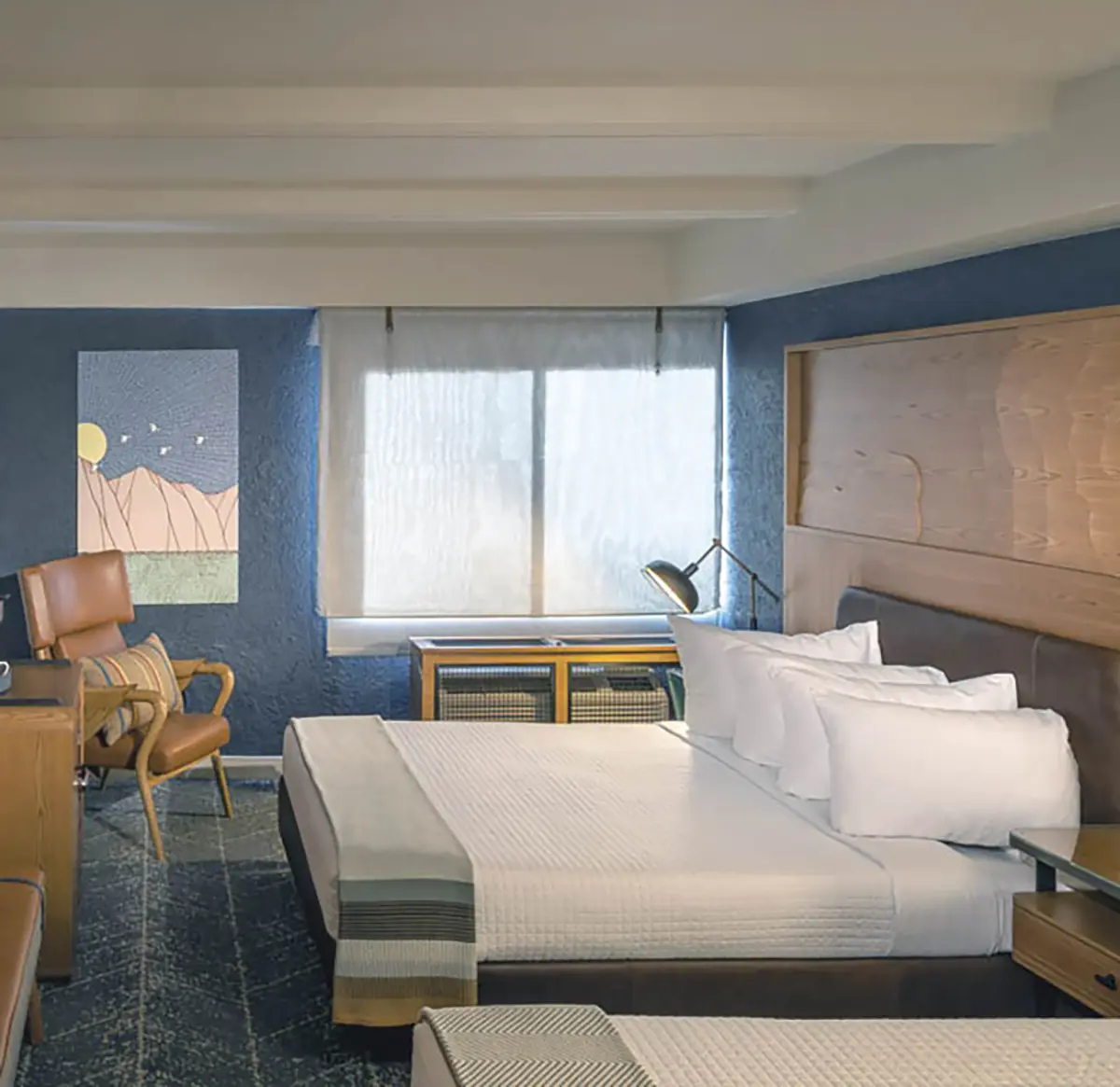
Alaska Hotel Group
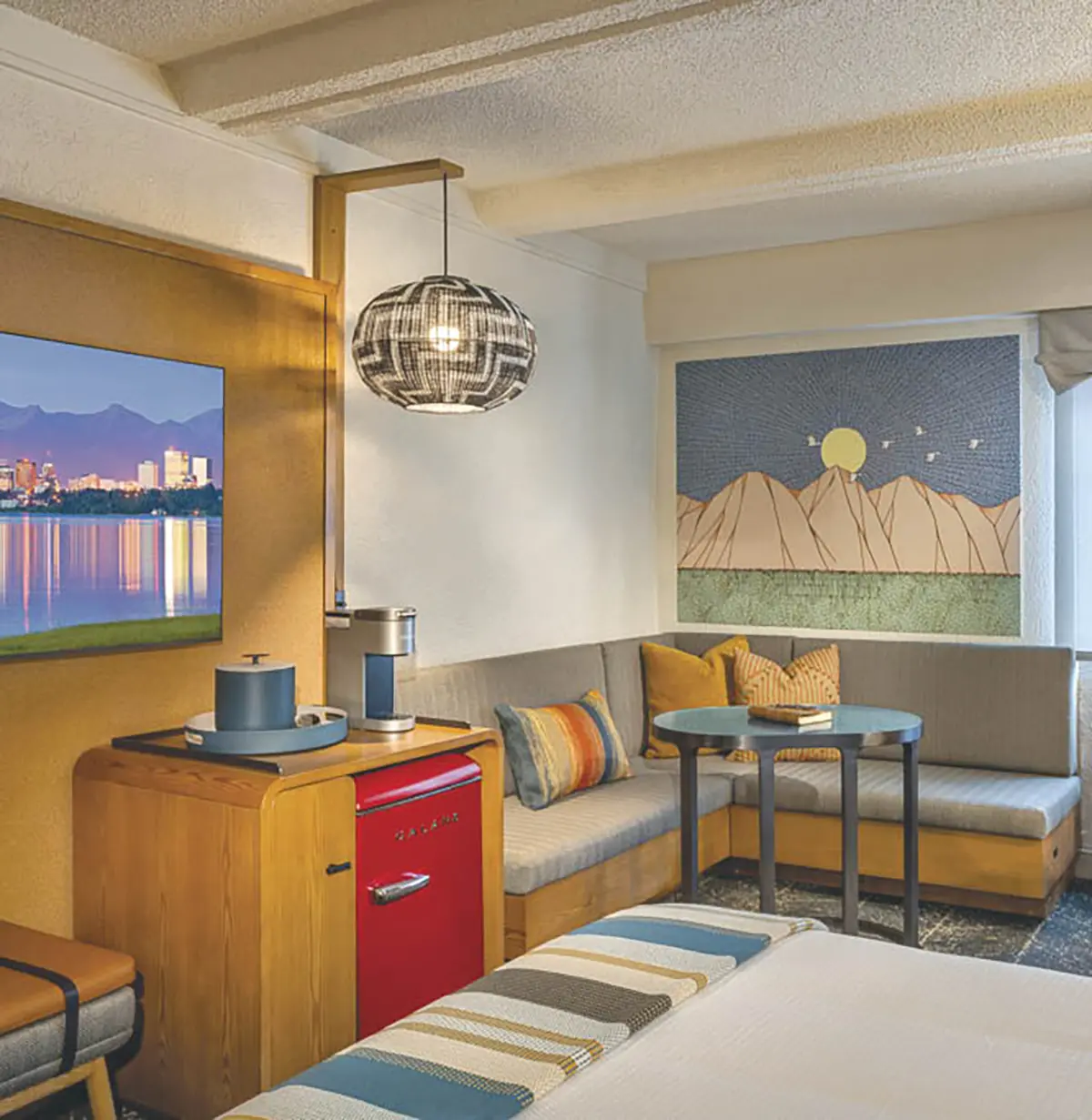
In the yet-to-be-finished lounge, Begich envisions gleaming pipes from the brewery and flames from kitchen stoves. The décor is being refined in-house even though the hotel is joining a national brand. MASH has a deal with a franchise, but Begich wasn’t prepared to announce which one until closer to the 2024 grand opening.
The brewery partner has been named, though: Midnight Sun Brewing Co. is prepared to open a new branch as early as next summer. Begich considers it both a centerpiece of the hotel’s restaurant, lounge, bar, and flexible gathering spaces while also being a standalone attraction. “You can park in the back, come through here, sit in here and have a beer with your friends. Never have to go into the hotel. You won’t even know it’s up there, if you don’t want to,” he says.
When Begich’s joint opens, he expects it will grow into something more than a second choice for overflow crowds when 49th State is too busy. “We hope it’s the other way: we’re full and they go down there,” he says. “Here’s why: the parking.”
Huge lots on Third Avenue service the hotel and the mall. The city controlled the parking, though, so MASH arranged to buy the hotel’s 200 spots from the Anchorage Community Development Authority for $2.2 million. The agency also agreed to lease the mall’s parking to the developers.
Cooperation with the city maintained cashflow during construction. Hotel rooms served as transitional housing, paid with federal COVID-19 relief funds. “We were able to supply what the city needed at that time and keep our project from being interfered with, frankly,” Begich says. “Don’t stop the project because of COVID; figure out how to work with it. In our case, we helped the city house a lot of people in the middle of winter.”
The city’s upgrades to Fourth Avenue—spending $6.5 million on improved curbs, sidewalks, lamps, and planters—work to the advantage of the Downtown Revitalization Project, as well. “The city did a great job on this street. They did that over two years ago. It changed the look. Now we have to do our part,” Begich says. “Public partnerships with the private sector are critical; this is an example.”
MASH negotiated with the city to heat the sidewalks outside the hotel using surplus energy as part of the C-PACER upgrade. On that snow-free pavement, Begich wants to install two or three fire pits for outdoor entertaining. “In Downtown, there’s no commercial property that has exterior fire pits on the main street,” he says. “The only other fire pits at street level are my wife’s at the back of The Kobuk.” (Deborah Bonito, Anchorage’s former first lady, owns the gift shop and café in the historic Kimball Building, a three-block walk from the hotel.)
As another way to bring the indoors outside, the hotel will have a service window for coffee. “You want locals to come here and feel like they don’t have to go to a hotel, and you want hotel folks to go where locals go,” Begich says. “We’re creating the best of both worlds.”
Alaska Business
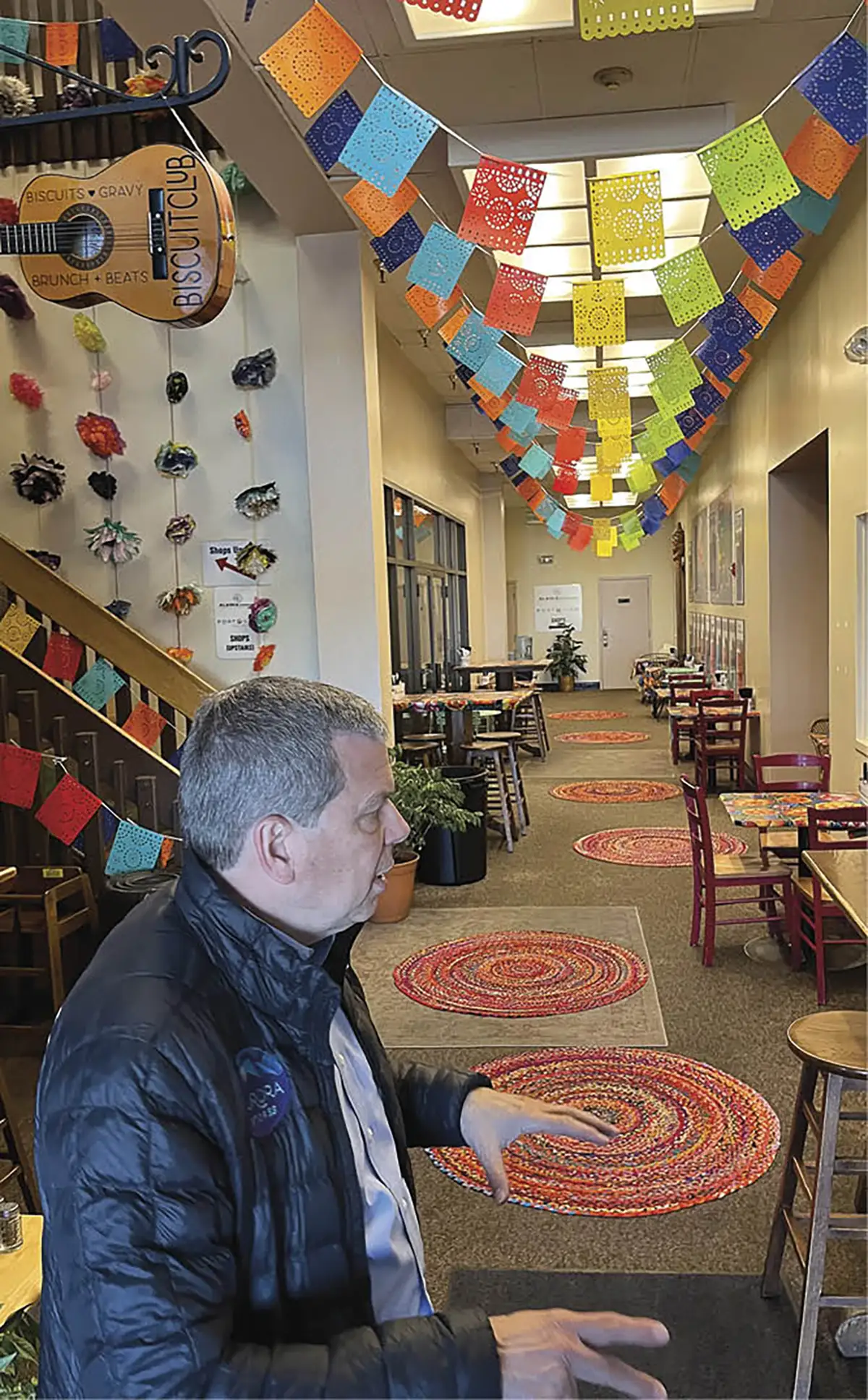
The market for Downtown housing is surging. This month, Block 96 Flats is getting ready to welcome its first tenants. The five-story apartment complex at Eighth Avenue and K Street has forty-eight units loaded with smart features, such as water detection to notify management if the washer leaks. Developer Shaun Debenham says the project is going great, and he’s excited to enter the market.
Housing is also part of redevelopment plans at Block 41, where the historic 4th Avenue Theater and a neighboring building have been demolished to make way for a $200 million mixed-use complex. Residents would share that address with planned hotel, office, retail, and entertainment space—not unlike Begich’s project barely two blocks down the street.
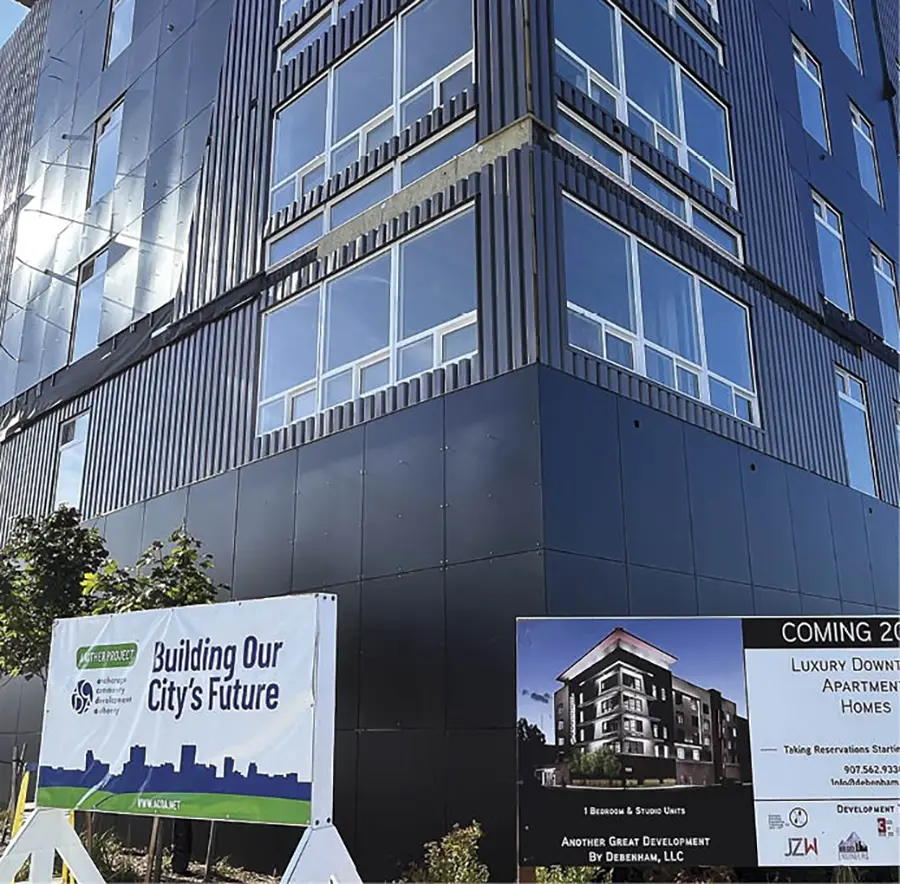
Alaska Business
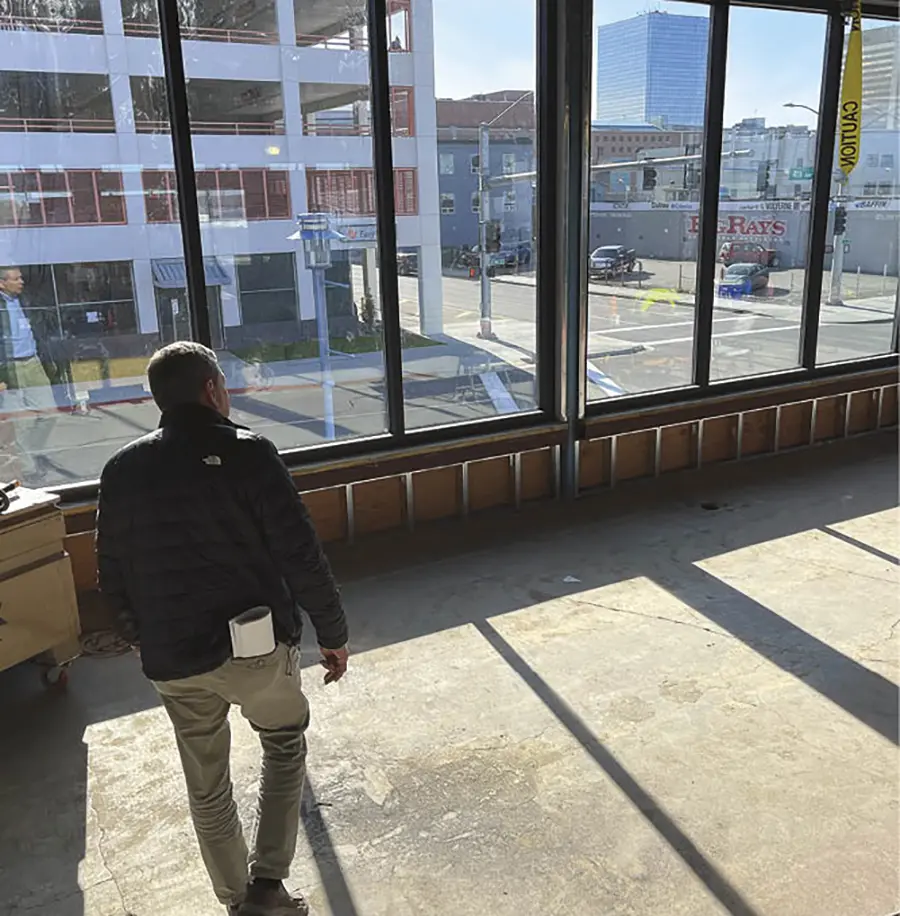
Alaska Business
While welcoming other projects to make Downtown more vibrant, Begich eagerly points to unique features in the refurbished Post Office Mall, such as a planned distillery. The indoor mall will have raised ceilings, inspired by waterfront market halls like Pike Place Market in Seattle. “It’s not this ‘80s ‘box everything in.’ When you walk in, you’ll see a much more open environment,” Begich says. “Right now, the idea of this [existing] design is to block away the street, which is a problem.”
On the lower level, Begich envisions an indoor “alley” as a rally point where visitors branch out to the property’s other experiences (and validate their parking stubs). That could include a film festival at Alaska Experience Theater or breakfast at Biscuitclub, a current tenant that already draws crowds.
As if pitching to a grocery chain, Begich points out, “This concrete is built to post office standards; you could drive a semi-truck on this, and it’s not gonna crack.”
No retailer had inked a deal as of this writing, but the obvious candidate is Begich’s own. One of his other ventures is Aurora Stores, which operates the Stuaqpak supermarket and convenience store in Utqiaġvik. Begich acknowledges the possibility but says he’s keeping options open.
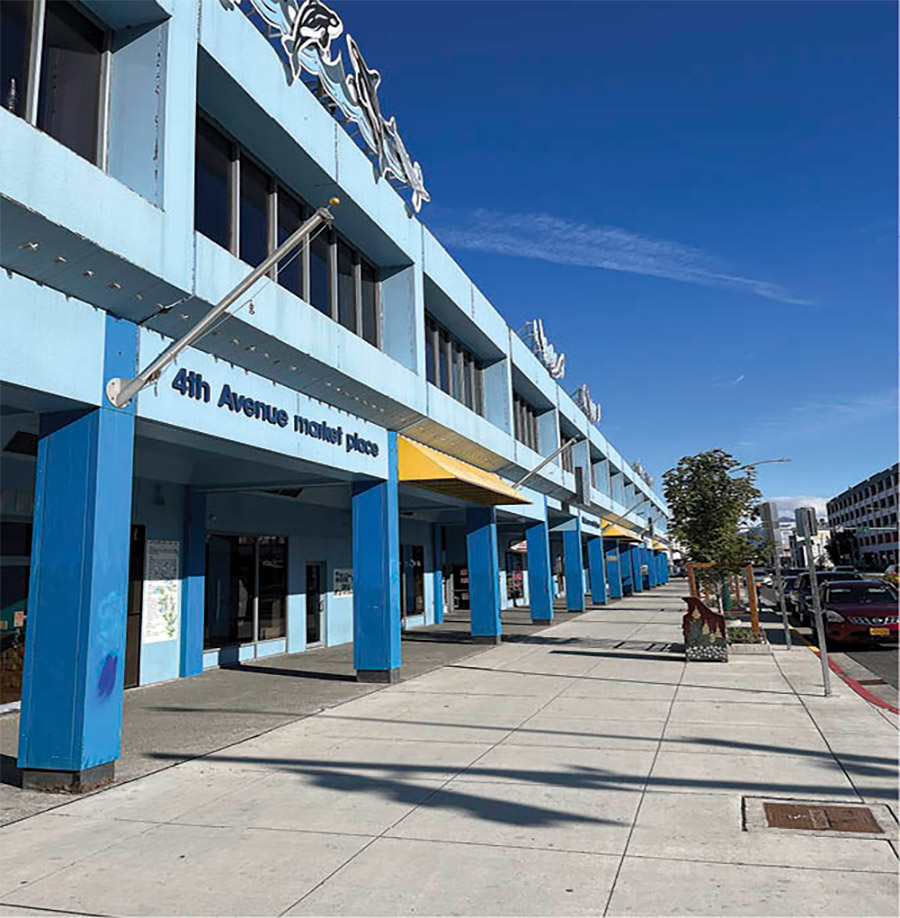
Alaska Business
The fulcrum for change rests on four blocks of Fourth Avenue from E Street to A Street.
“You can transform a downtown. There’s not many cities you can do this with. Most of these are fifty blocks, sixty blocks, seventy blocks; we can do four,” Begich says. “That’s significant.”